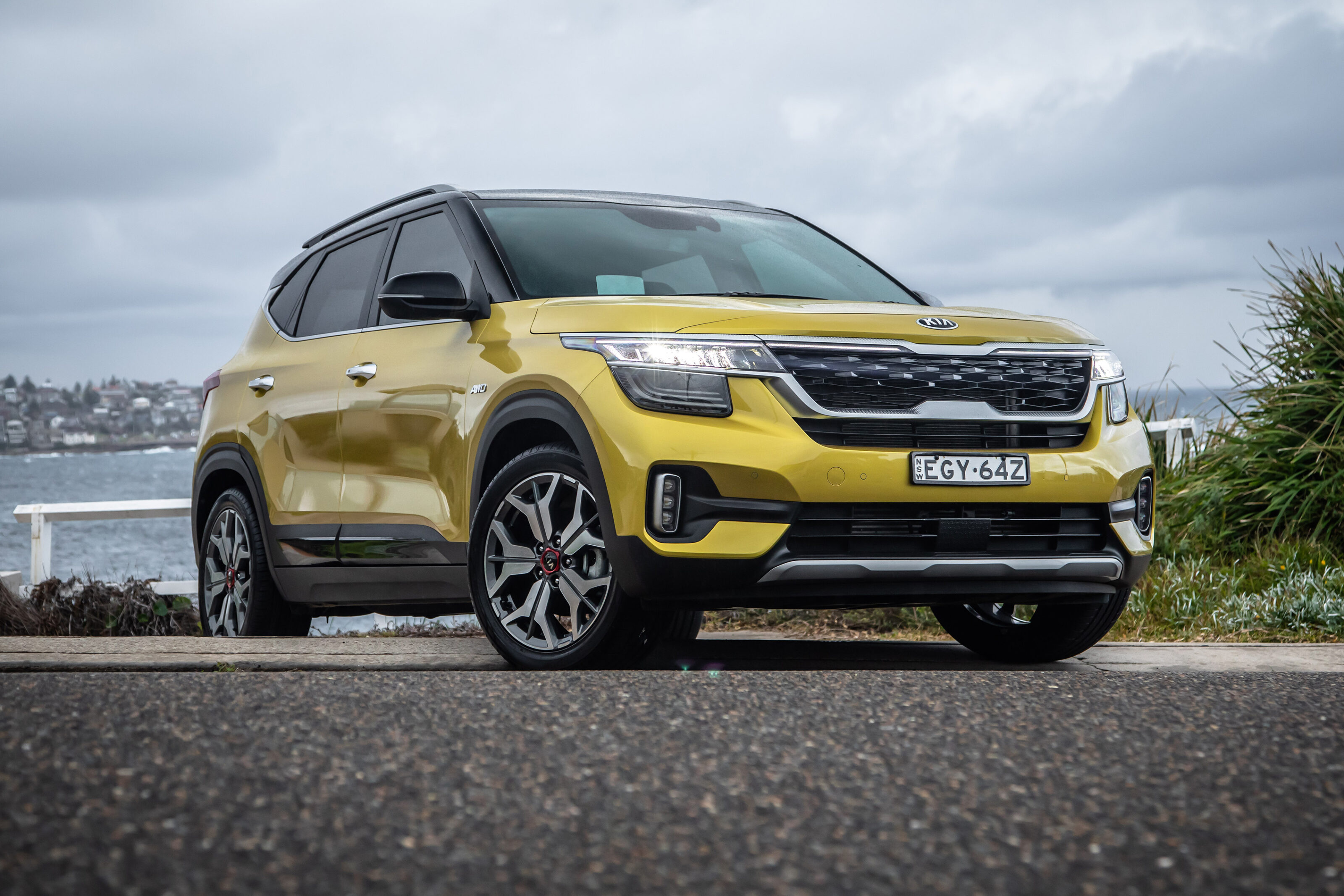Score breakdown
Things we like
- Spacious interior and large boot for its size
- Long list of standard gear
- Everyday driveability
Not so much
- Not the most refined compact SUV
- Some intrusive driver ‘aids’
- Missing some expected flagship features
UPDATE, November 25, 2022: Updated 2023 Kia Seltos now in Australia
Kia’s updated 2023 Kia Seltos range is now in Australia, and we’ve driven it. Get the full story, and video, at the link below.

Story continues: 2021 Seltos GT-Line review
Small SUVs outsell small cars these days, and the Kia Seltos is one of the relatively fresh models catering for all those buyers seeking a higher seating position (and an arguably more interesting body style).
The GT-Line is the flagship model, priced from $42,200 (or about $44,300 driveaway).
It’s lost some of its value compared to when the GT-Line cost $41,990 driveaway in 2019 and 2020, though still offers plenty of features to tempt those who want more trinkets than they would typically get from a similarly priced but lower-specced model from the next SUV segment up.
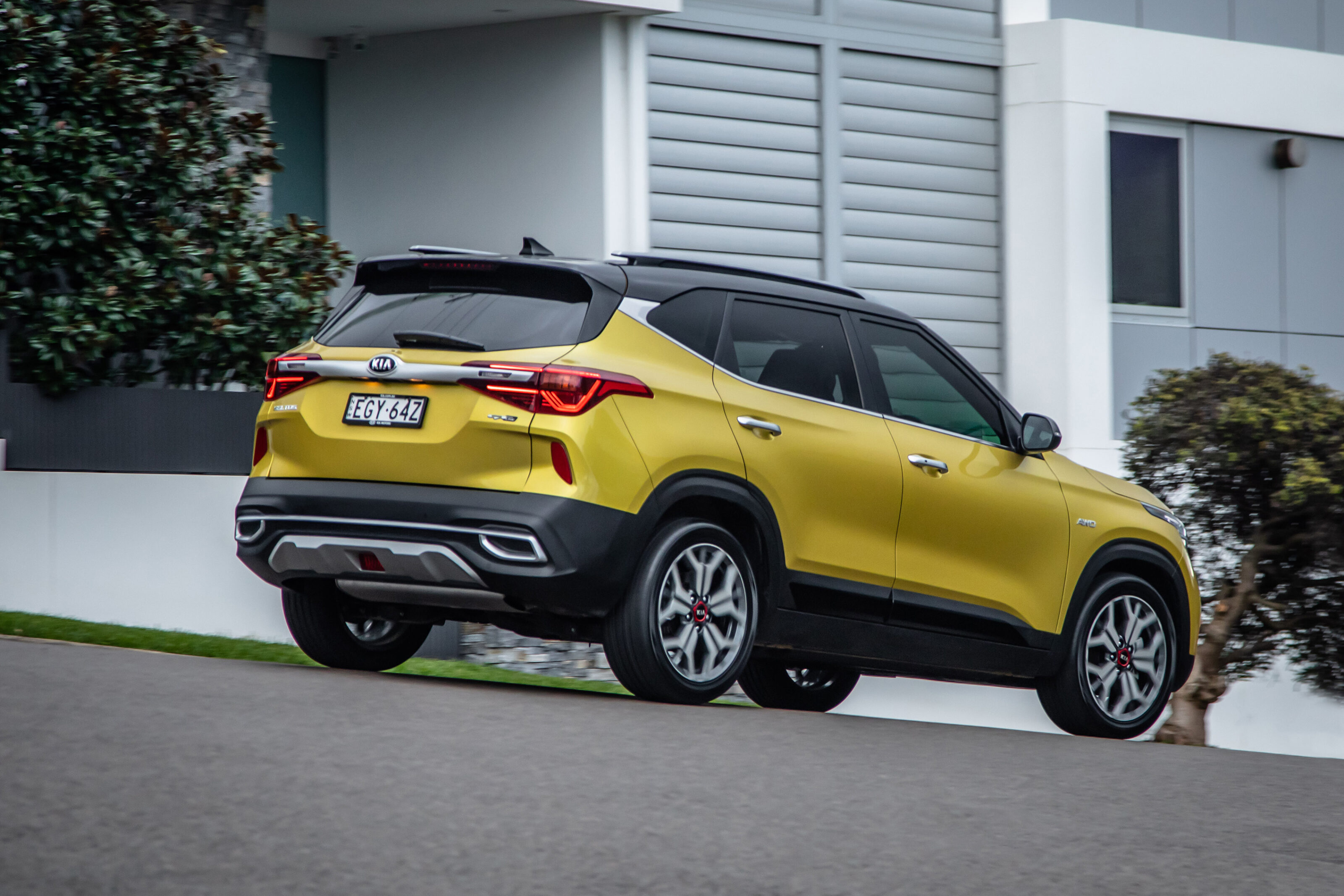
Many features are also range exclusives, including LED headlights and our GT-Line’s exterior colour combination of black roof and ‘Starbright’ yellow. Pick the ‘Clear White’ with black roof, and with that angled C-pillar treatment, the Seltos can do a fine imitation of a Volvo XC40 R-Design in the same scheme.
The GT-Line’s cabin also presents a heated steering wheel, fancier upholstery, electric front seats with heating and cooling, a tilt/slide sunroof (not available on two-tone paint jobs), head-up display and Bose audio system not available on other trim grades.
Every Seltos comes with an all-black interior, though, and a splash of colour here and there would help lift some of the sombreness. And while there are softer trim parts for key touchpoints, the overriding impression of quality is not as high as you’ll find in the rival Mazda CX-30 or Skoda Kamiq.
The ‘Premium’ seats aren’t finished in real leather, either.
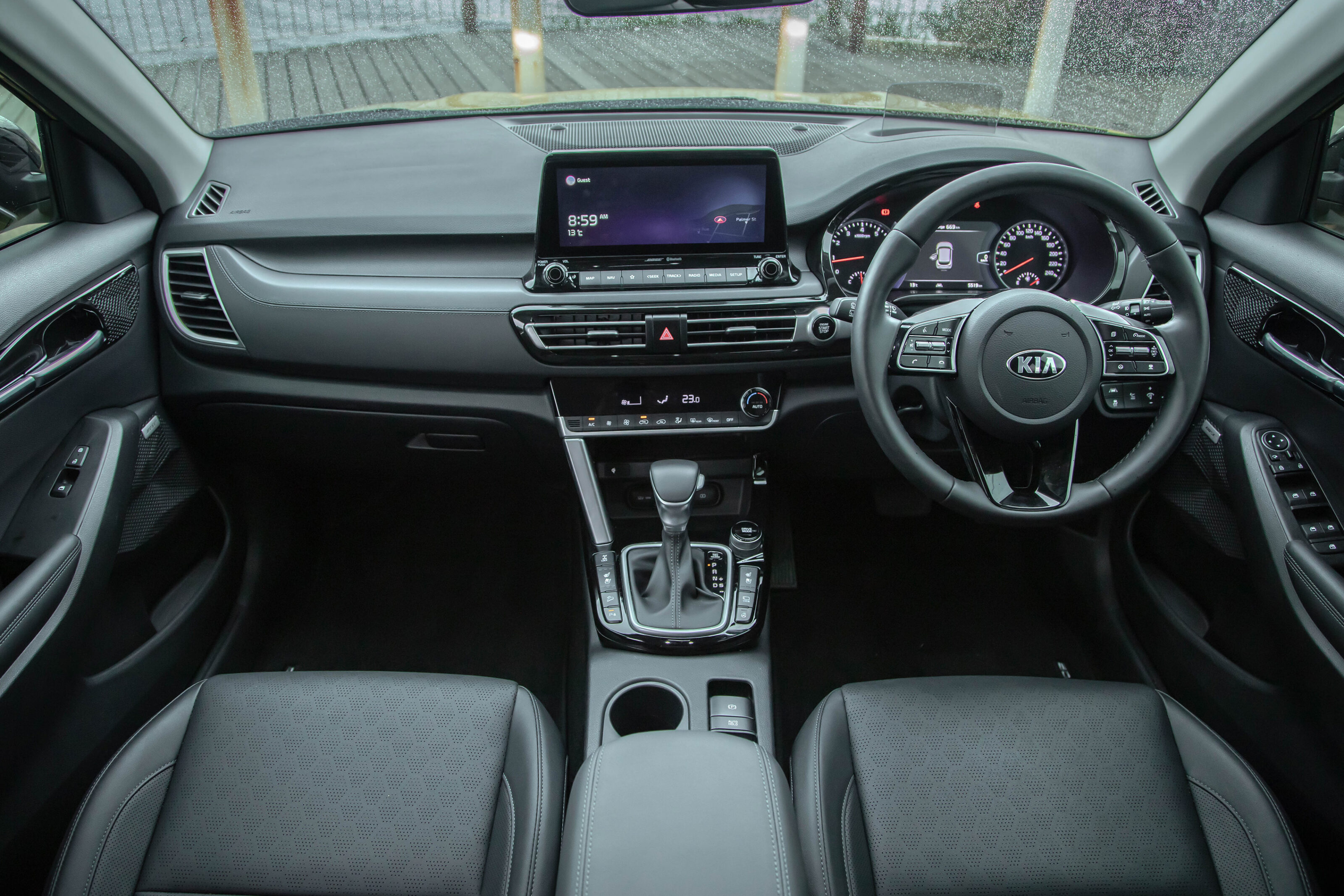
The GT-Line also misses out on some convenience features expected for a range-topping model at this price point.
Only the driver’s window has one-touch operation, there’s no full keyless entry (you instead press a button on the door handle), there’s no auto tailgate and the windows won’t auto-shut when locking the car (a feature found on more affordable SUVs such as the Ford Puma ST-Line V).
Ergonomics, practicality, and infotainment are all strong cards, however.
The 10.25-inch touchscreen is currently the largest display in the segment and it’s put to good use with an attractive array of function icons for the main menu. It’s simple to navigate and there’s a minimal pause when making selections.
Qi wireless smartphone charging is also specific to the GT-Line (though Kia will surely need to make it standard across the range soon, with the feature becoming increasingly common).
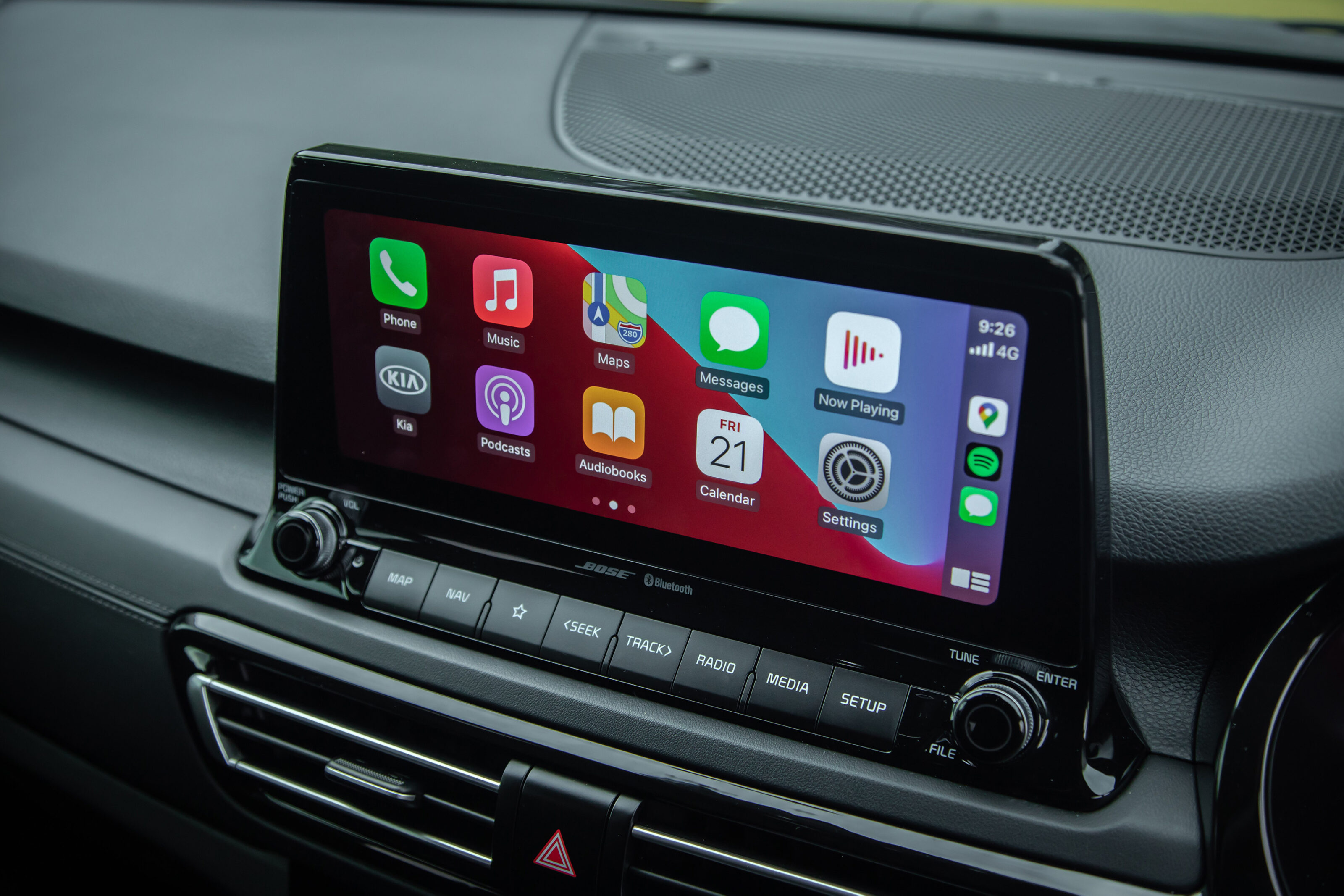
For now, only the base Seltos S offers wireless Apple CarPlay and Android Auto, but the other grades including GT-Line have the wired equivalent of the smartphone-mirroring tech.
The bassy Bose system is enjoyable in isolation and comes with matching ambient lighting. If you’re an audiophile, though, we think you’ll better appreciate the Bose audio in the CX-30 Astina, the Beats system in the Volkswagen T-Cross, or the Skoda Premium Audio available in the Kamiq.
Those VW Group SUVs, as well as more affordable compact SUVs such as the Puma, provide fully digital driver displays, where the Seltos GT-Line features only a 7.0-inch infographics panel between its analogue dials.
A head-up display projects information such as speed, posted speed limits and nav guidance onto a transparent plastic panel (rather than the windscreen).
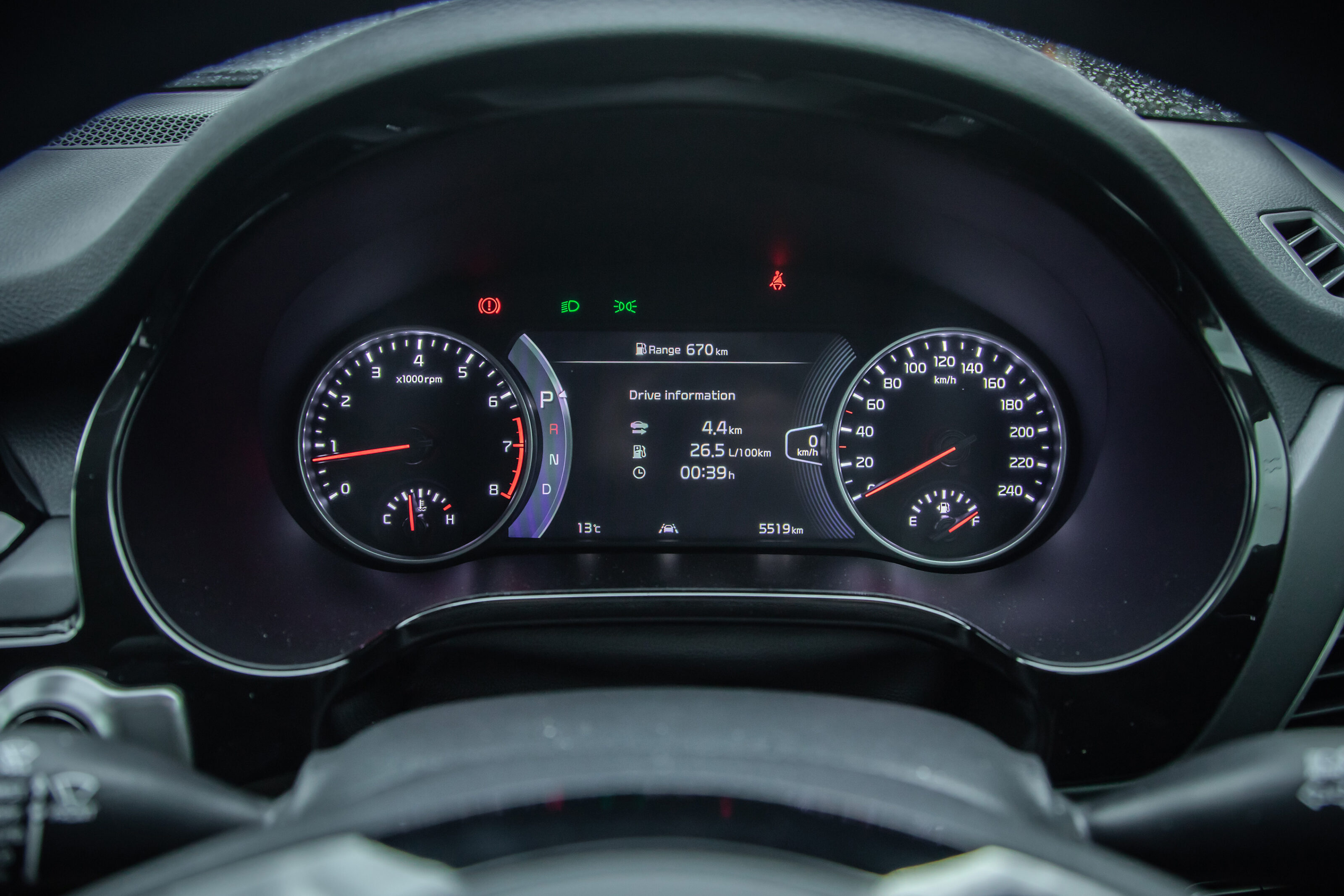
At 4370mm, the Seltos is neither the longest nor the shortest SUV in its segment. Yet its rear-seat space is well above average, with headroom and knee room more than sufficient to keep taller passengers happy.
Kids in child seats should appreciate the space, too, while tall rear windows help with vision out and allow extra light into the rear seat.
The comfortable bench is complemented by two-stage recline for the seatbacks and rear vents, as well as a centre armrest with cupholders. GT-Line is the only Seltos to include a USB port in the back.
Many features are also range exclusives…the Seltos can do a fine imitation of a Volvo XC40 R-Design in the same scheme
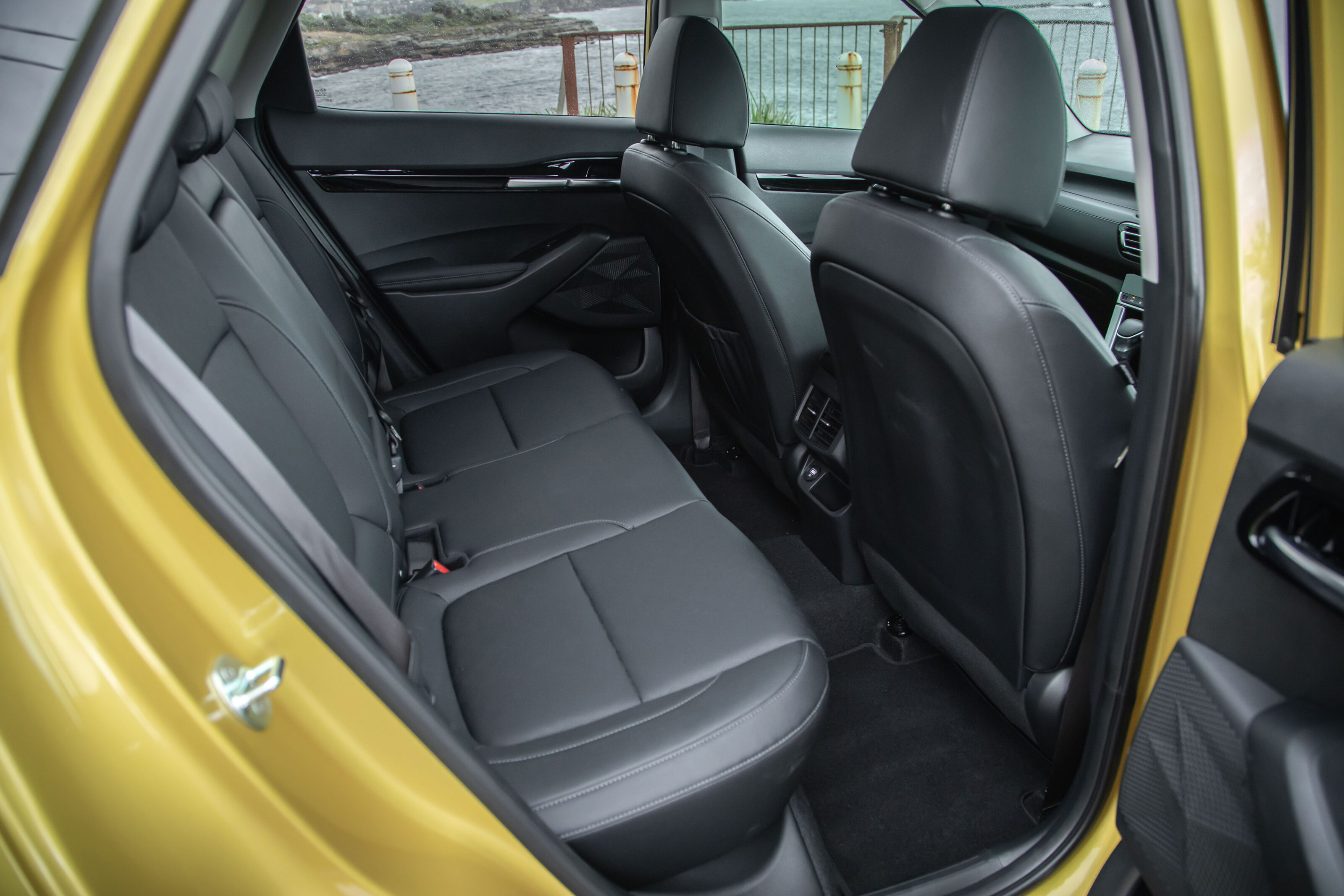
Boot space is another plus for the Seltos. At 433 litres, there’s significantly more luggage capacity than in Kia’s smaller SUV, the Stonic (358L), and more than key rivals including the twin Hyundai Kona (364L), Mitsubishi Eclipse Cross (341L), Skoda Kamiq (400L), Subaru XV (310L), and Toyota C-HR (377L).
It’s only a handful of litres behind the biggest boots in the class, which belong to the Jeep Compass (438L) and Honda HR-V (437L).
There’s nothing fancy about the boot – some compact SUVs have more versatile set-ups such sliding rear benches (VW T-Cross, for example) or adjustable floors (Ford Puma, for example), or storage options galore (such as the Kamiq). But many owners will appreciate the full-size spare under the Kia’s boot floor.
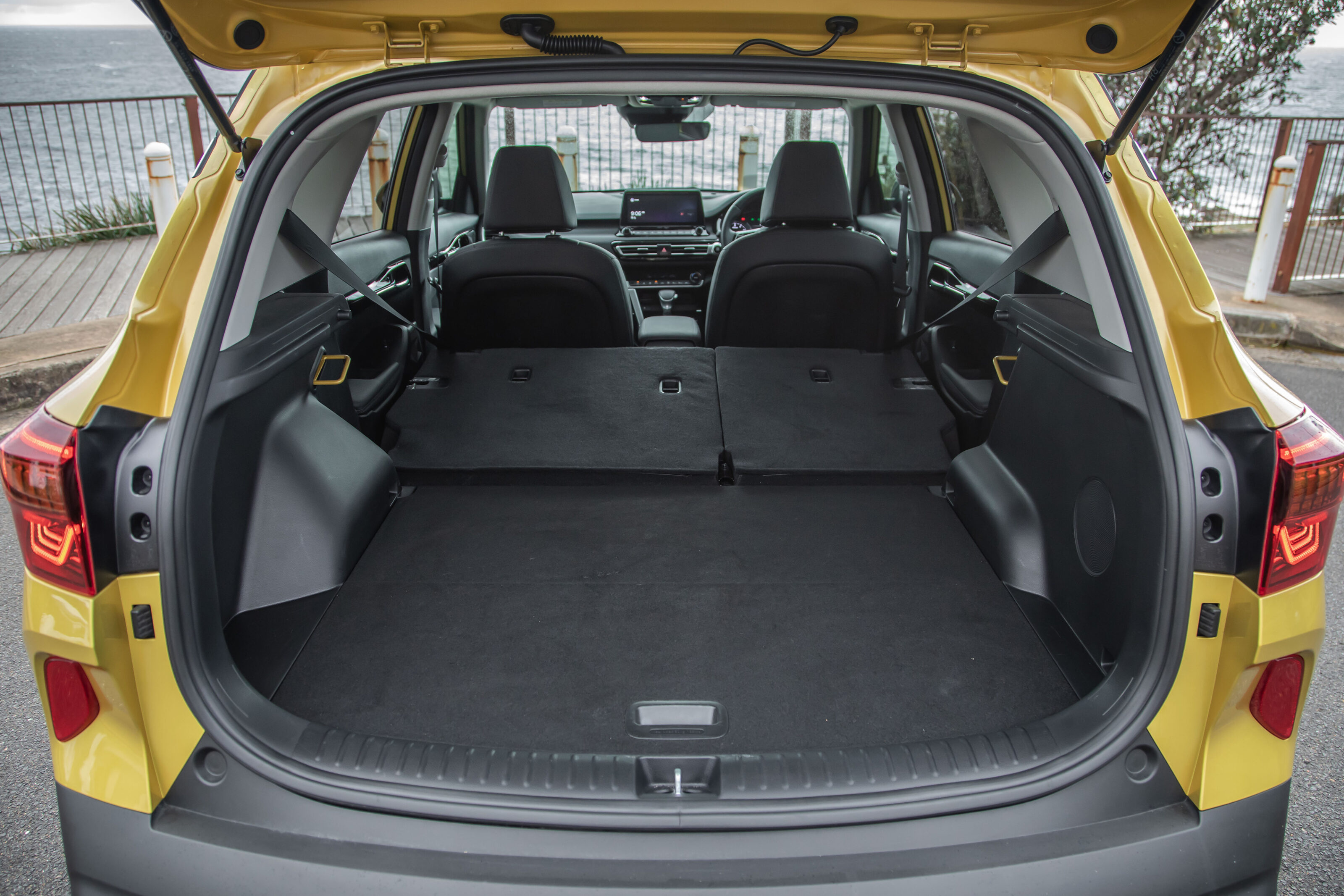
The GT-Line features an engine and suspension upgrade over most other Seltos models except for the all-wheel-drive version of the next-grade-down Sport+.
Where most variants are powered by a 110kW 2.0-litre petrol engine and feature a torsion beam semi-independent rear suspension layout, the top-two Seltos models gain a 130kW turbocharged 1.6-litre petrol and a more sophisticated, fully independent multi-link set-up at the back.
Forget the kilowatts, though, because it’s the turbo engine’s ability to generate peak torque of 265Nm between 1500 and 4500rpm that lends the GT-Line (and Sport+ AWD) performance that is far above the segment average let alone the relatively weak 2.0-litre (with 180Nm that doesn’t arrive until a high 4500rpm).
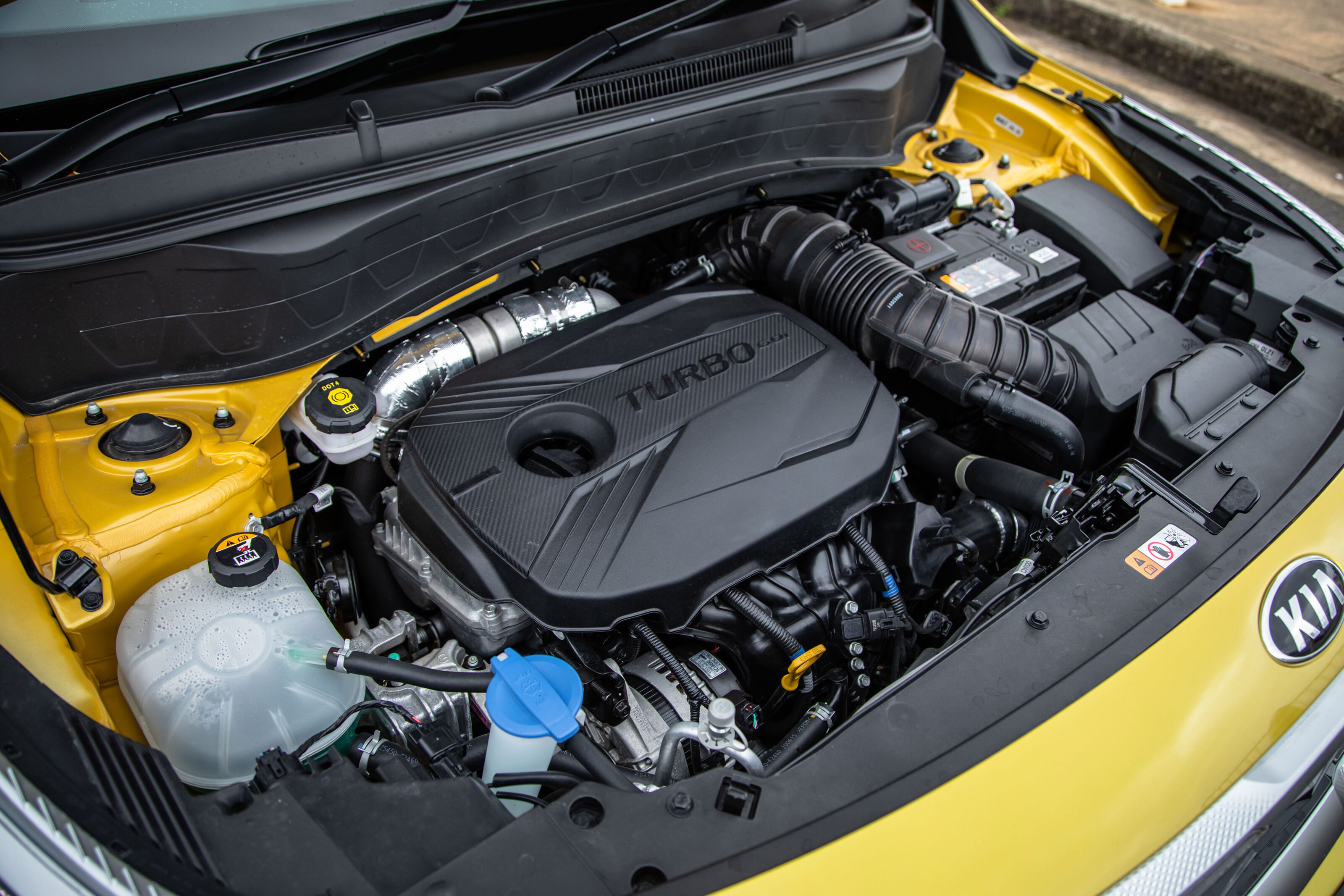
When Wheels magazine pitted the GT-Line against a Mazda CX-30 G25 Astina and Toyota C-HR Hybrid Koba in a comparison test last year, the Kia was the quickest-accelerating vehicle of the trio – though it also benefits from an on-demand all-wheel-drive system where these rivals are front-drive only.
The seven-speed dual-clutch auto isn’t as responsive as some competitors using similar transmission technology, though the shifts are generally smooth and the Seltos GT-Line moves away from standstill with less hesitation than many DCT-equipped compact SUVs.
This all makes for easy driveability that any owner will appreciate daily. Lower fuel consumption would be preferable, though.
While the official figure is 7.6L/100km, our indicated consumption swung between mid-8.0s and low-9.0s even with some freeway driving. The engine is tuned to run on regular unleaded, at least.

Refinement is also an area Kia could target for the Seltos’s mid-life update, which based on typical lifecycles would be expected around 2022 or 2023.
Depending on speed, the turbo engine can be buzzy or droney and tyre noise starts to become intrusive on coarser road surfaces.
There’s agreeable ride quality around town and on the open road, though another future revision could be to make the suspension a bit more relaxed on country roads.
With one of the highest hip points in the segment, the Seltos’s elevated seating brings excellent forward, side and rearward vision.

There’s also blind-spot assistance, as well as plenty of other driver aids such as adaptive cruise control. Not all are great, though.
The lane-following function and lane-keep assist systems are particularly tempting to switch off, or keep disengaged, as they interfere too regularly with the steering.
While lane-keep always defaults to on every time the car is switched on, the Seltos is pleasant to steer around town as the system only works above 60km/h if, that is, you haven’t switched it off.
One downside to choosing a 1.6L turbo Seltos, such as the GT-Line, is servicing. Intervals are shorter at 10,000km and visits are slightly more expensive compared with the 15,000km-interval 2.0-litre Seltos variants.
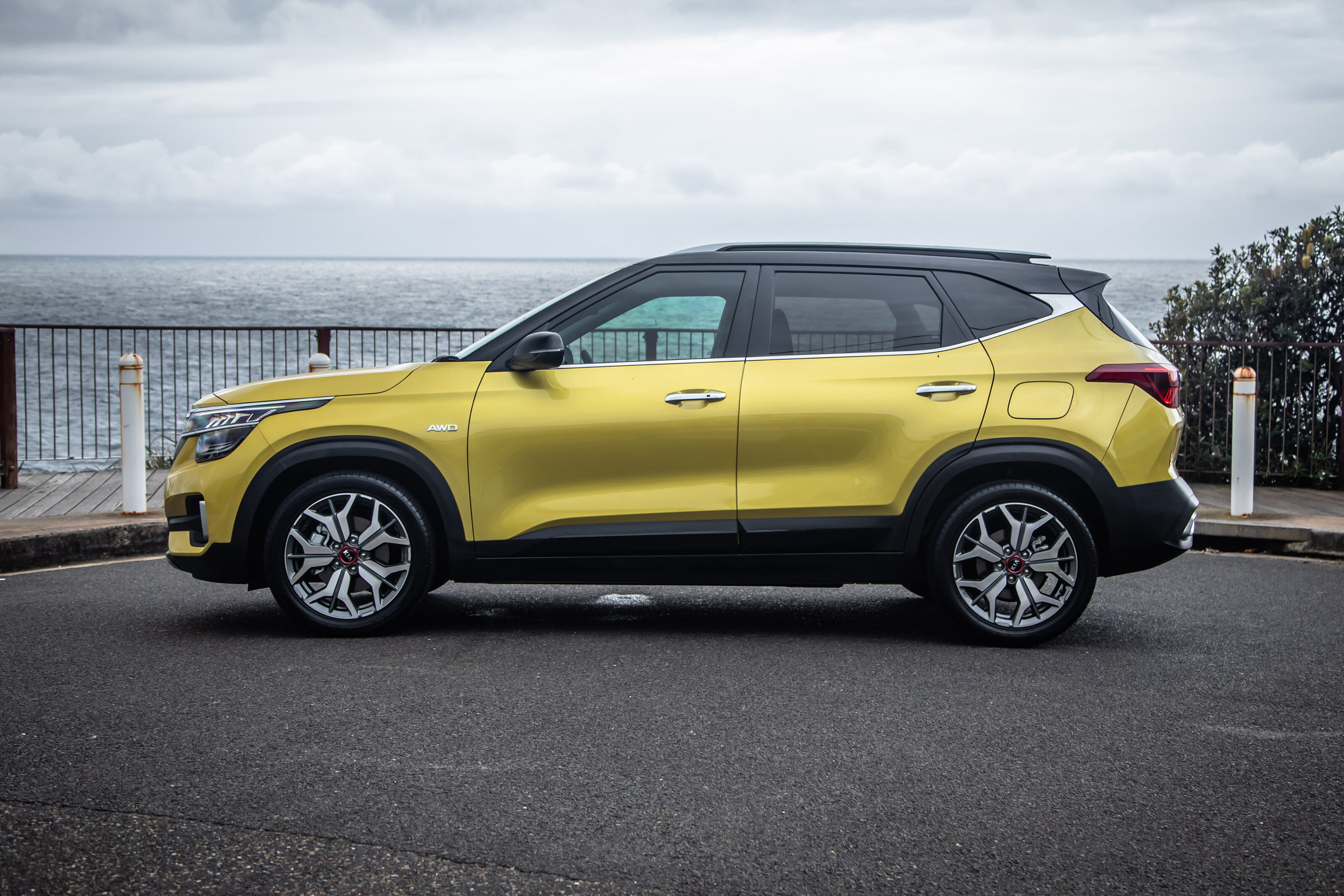
With three years currently setting owners back $1080 and five years costing $1989 in total, several rival models are cheaper to maintain.
A seven-year factory warranty is a big plus on the ownership side, with most competitor models stuck on five years.
Forget the kilowatts, though, because it’s the turbo engine’s ability to generate peak torque of 265Nm that lends the GT-Line performance that is far above the segment average
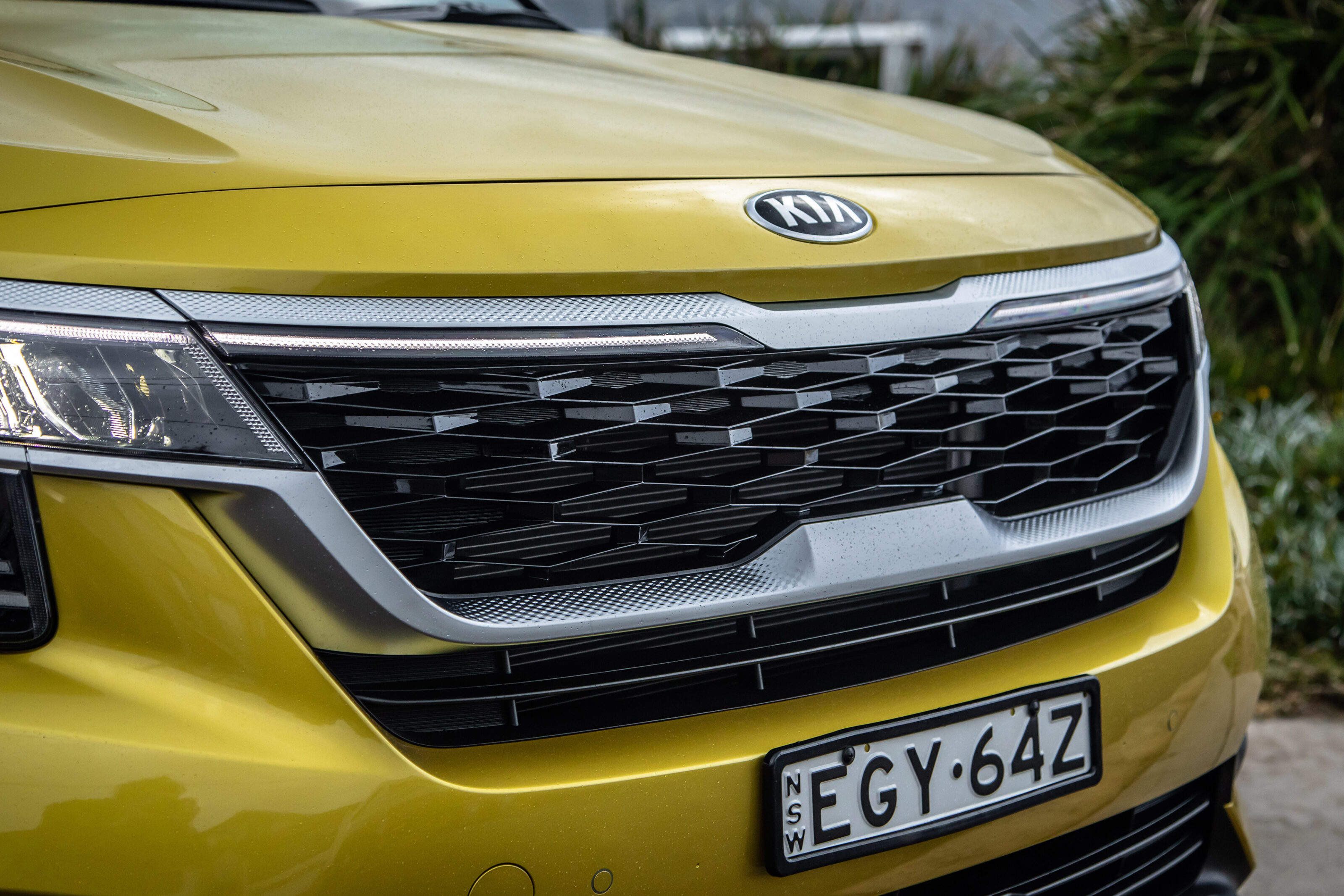
If you want a more premium cabin experience, consider a (less practical) Mazda CX-30 Astina or (just as practical) Skoda Kamiq Monte Carlo; if you’d like a bit of fun factor to the driving experience, try out Toyota’s C-HR Koba or Ford’s Puma ST-Line V.
But while there are some rough edges to the Kia Seltos GT-Line and some flagship-style features are missing, there’s still a small SUV here that will please many owners with its performance, practicality and a fairly generous amount of kit.
Score breakdown
Things we like
- Spacious interior and large boot for its size
- Long list of standard gear
- Everyday driveability
Not so much
- Not the most refined compact SUV
- Some intrusive driver ‘aids’
- Missing some expected flagship features


